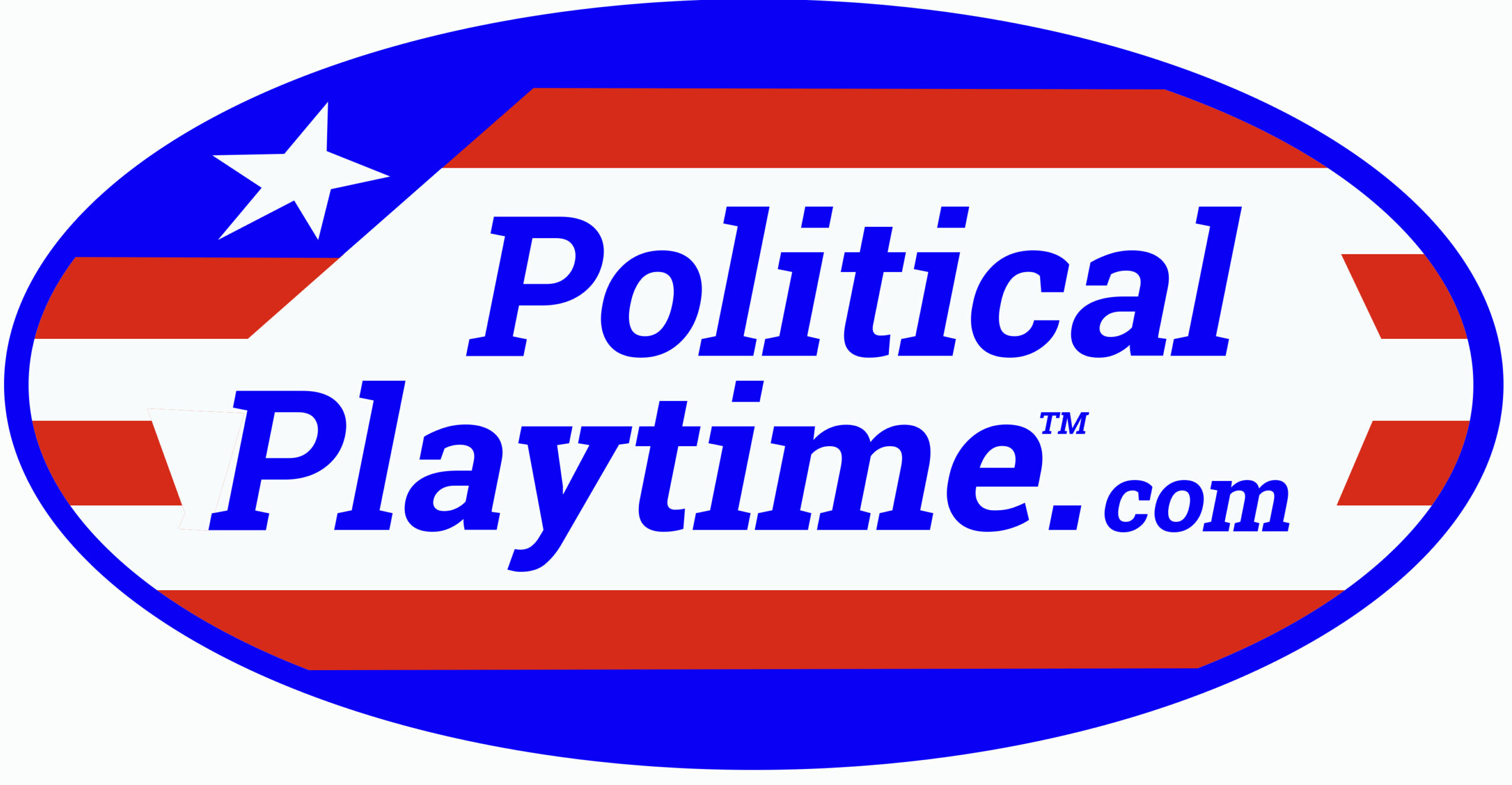The Creeping Dictatorship: The Erosion of American Democracy Through Historical Precedent

By Political Playtime Editorial Team
Abstract
This paper examines the gradual concentration of political power in the United States government and the parallel decline of civic participation that has enabled it. Using historical examples spanning from the early republic to the post-9/11 era, it argues that through incremental, legally sanctioned measures, the United States has been drifting toward an authoritarian model—a process referred to here as the creeping dictatorship. The study integrates constitutional analysis, historical precedent, and contemporary sociopolitical data to highlight how legislative paralysis, executive overreach, and public apathy have weakened democratic resilience. The conclusion suggests that unless the American populace reasserts its role as the guardian of liberty, the erosion of democracy may become irreversible.
I. The Constitutional Framework and Its Early Strains
The framers of the United States Constitution sought to establish a republic that could resist tyranny through a system of checks and balances (Madison, 1788/2003). Yet the tension between liberty and security emerged almost immediately. The Alien and Sedition Acts of 1798 criminalized dissent against the federal government, prompting Thomas Jefferson to denounce them as “reign of witches” legislation that violated the First Amendment (Jefferson, 1798/1999).
During the Civil War, President Abraham Lincoln suspended habeas corpus, claiming necessity under wartime conditions. This action, though framed as a temporary emergency measure, established a precedent for executive disregard of constitutional rights during crises. The Supreme Court’s later ruling in Ex parte Milligan (1866) reaffirmed the primacy of civilian courts but did little to reverse the normalization of emergency powers (Levinson, 2006).
II. The Expansion of the Modern State
The 20th century introduced what historians describe as the “administrative revolution.” In response to the Great Depression, President Franklin D. Roosevelt’s New Deal consolidated federal control over economic and social policy. While the reforms rescued millions from destitution, they also centralized power in the executive branch, a transformation that constitutional scholars have noted as both stabilizing and perilous (Leuchtenburg, 1995).
Roosevelt’s 1937 court-packing proposal, intended to ensure judicial approval of his agenda, reflected an authoritarian temptation beneath democratic legitimacy. Similarly, the Cold War era institutionalized domestic surveillance and ideological conformity. The House Un-American Activities Committee (HUAC) and Senator Joseph McCarthy’s hearings weaponized suspicion to silence opposition, undermining the freedoms that distinguished democracy from the totalitarian regimes it opposed (Schrecker, 1998).
III. The National Security State and the Post-9/11 Paradigm
The terrorist attacks of September 11, 2001 marked a watershed in executive expansion. The USA PATRIOT Act (2001) granted unprecedented surveillance powers to federal agencies, often circumventing judicial oversight. Programs revealed by Edward Snowden in 2013 confirmed the National Security Agency’s mass data collection efforts targeting both foreign and domestic communications (Greenwald, 2014).
Political theorist Carl Schmitt’s dictum that “sovereign is he who decides on the exception” (Schmitt, 1922/2005, p. 5) became disturbingly relevant. Emergency measures justified in times of peril have evolved into permanent policy. As a result, the United States maintains a vast intelligence infrastructure—arguably a fourth branch of government—operating largely beyond democratic accountability (Zegart, 2022).
IV. Congressional Paralysis and Institutional Abdication
While executive power expanded, Congress—constitutionally the most representative branch—succumbed to dysfunction. Rising partisanship, corporate lobbying, and procedural deadlock have rendered it increasingly ineffective (Mann & Ornstein, 2012). Presidents of both parties now rely heavily on executive orders, eroding the legislative function that anchors democracy.
Historian Arthur Schlesinger Jr. (1973) warned of this phenomenon in The Imperial Presidency, describing it as the institutionalization of Caesarism under republican guise. The Supreme Court, meanwhile, has facilitated elite dominance through rulings such as Citizens United v. Federal Election Commission (2010), which unleashed virtually unlimited corporate spending in politics. Together, these trends have subverted the principle of popular sovereignty enshrined in the Constitution.
V. Civic Apathy and the Cultural Foundations of Decline
The health of a democracy depends on the engagement of its citizens. Yet voter participation in the United States has been persistently low: midterm turnout has often fallen below 40% (Pew Research Center, 2023). Public trust in government, once exceeding 70% in the early 1960s, has hovered below 25% since the early 2000s (Pew Research Center, 2022).
This disillusionment coincides with the fragmentation of the media landscape. The rise of algorithm-driven social networks has replaced deliberative discourse with ideological isolation, producing what Hannah Arendt (1951) called the “atomization” of individuals—a condition ripe for totalitarian manipulation. As misinformation proliferates, citizens become easier to polarize and harder to mobilize in defense of democratic principles.
VI. Contemporary Symptoms of Democratic Decay
The United States today exhibits the defining features of what scholars term democratic backsliding (Levitsky & Ziblatt, 2018):
- Delegitimization of the Press – Politicians increasingly frame journalists as “enemies of the people,” undermining the press’s role as a democratic watchdog.
- Erosion of Electoral Integrity – Gerrymandering, voter ID laws, and untraceable campaign financing distort representation.
- Normalization of Corruption – Ethical breaches that once demanded resignations are now absorbed into partisan identity.
- Rise of Personality Cults – Political movements organize around individual charisma rather than ideological vision.
- Judicial Politicization – Lifetime appointments have become tools of partisan entrenchment rather than instruments of justice.
As historian Timothy Snyder (2017) notes, authoritarianism in modern democracies rarely arrives through violent revolution; it “comes in small steps,” legitimized by law and tolerated by citizens.
VII. The Lessons of History
The trajectory of declining republics offers sobering parallels. The Roman Republic yielded to imperial rule through gradual normalization of emergency decrees and populist demagogues (Millar, 1989). The Weimar Republic’s collapse into Nazi dictatorship followed years of executive decrees, legislative paralysis, and public despair (Evans, 2005). In each case, democracy eroded not from external invasion but from internal exhaustion.
Justice Robert H. Jackson’s dissent in Korematsu v. United States (1944) warned that “once a judicial opinion rationalizes such an order, the court for all time has validated the principle” of repression. The same logic applies to authoritarian precedents today: once normalized, they rarely reverse without systemic renewal.
VIII. Conclusion: The Threshold of Autocracy
The United States now faces what may be termed a legal dictatorship—a system in which democratic forms persist while substantive freedoms erode. The Constitution’s endurance depends not on parchment barriers but on the vigilance of its citizens. As Benjamin Franklin famously cautioned in 1787, America has “a republic, if you can keep it.”
The evidence suggests that keeping it requires more than faith in institutions; it demands an active, informed, and morally courageous public. Without such engagement, the creeping dictatorship will not arrive—it will simply be recognized too late.
References
Arendt, H. (1951). The origins of totalitarianism. Harcourt, Brace & World.
Evans, R. J. (2005). The coming of the Third Reich. Penguin Books.
Greenwald, G. (2014). No place to hide: Edward Snowden, the NSA, and the U.S. surveillance state. Metropolitan Books.
Jefferson, T. (1798/1999). The writings of Thomas Jefferson (A. Lipscomb & A. Bergh, Eds.). Thomas Jefferson Memorial Association.
Leuchtenburg, W. E. (1995). Franklin D. Roosevelt and the New Deal, 1932–1940. Harper Perennial.
Levitsky, S., & Ziblatt, D. (2018). How democracies die. Crown Publishing Group.
Levinson, S. (2006). Our undemocratic constitution: Where the Constitution goes wrong (and how we the people can correct it). Oxford University Press.
Mann, T. E., & Ornstein, N. J. (2012). It’s even worse than it looks: How the American constitutional system collided with the new politics of extremism. Basic Books.
Madison, J. (1788/2003). The Federalist Papers. Signet Classics.
Millar, F. (1989). The emperor in the Roman world (31 BC–AD 337). Cornell University Press.
Pew Research Center. (2022). Public trust in government: 1958–2022. Retrieved from https://www.pewresearch.org
Pew Research Center. (2023). Voter turnout in U.S. elections. Retrieved from https://www.pewresearch.org
Schlesinger Jr., A. M. (1973). The imperial presidency. Houghton Mifflin.
Schmitt, C. (1922/2005). Political theology: Four chapters on the concept of sovereignty (G. Schwab, Trans.). University of Chicago Press.
Schrecker, E. (1998). Many are the crimes: McCarthyism in America. Princeton University Press.
Snyder, T. (2017). On tyranny: Twenty lessons from the twentieth century. Tim Duggan Books.
Zegart, A. (2022). Spies, lies, and algorithms: The history and future of American intelligence. Princeton University Press.




